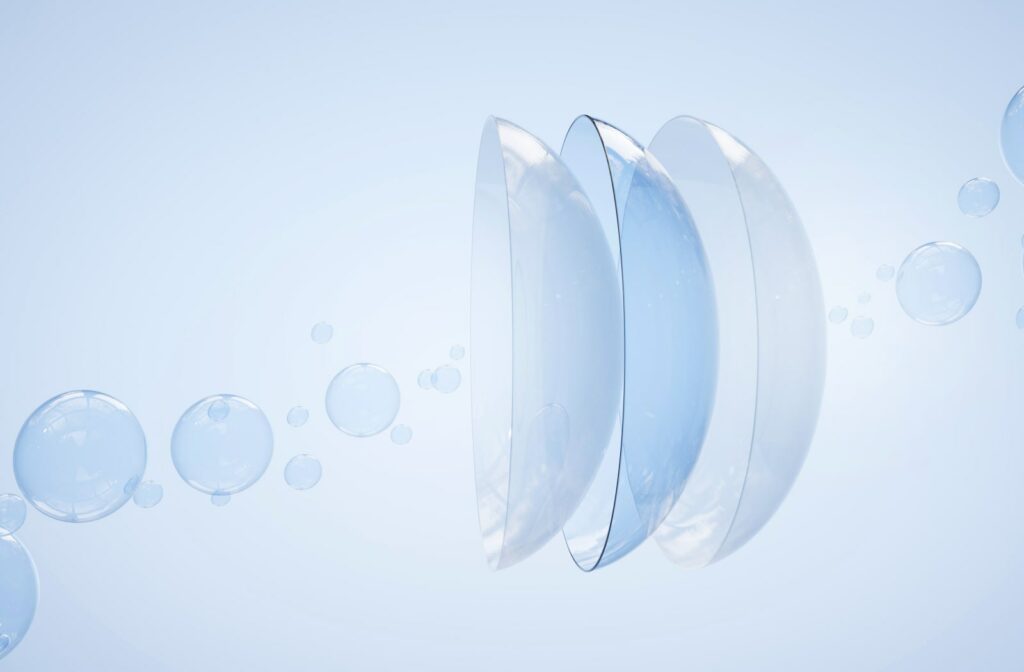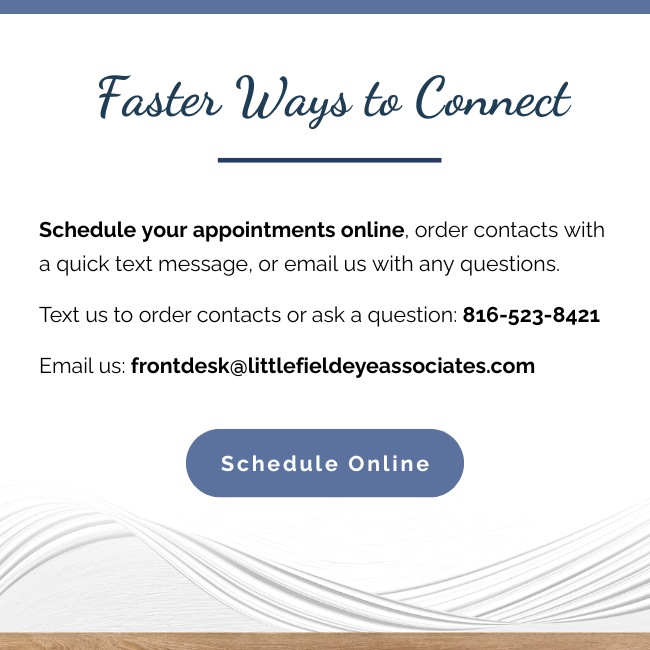If you wear contact lenses, you may have heard of scleral lenses. Scleral lenses feature a unique shape that rests on your sclera—the white part of your eye— and vaults over your cornea without touching it.
In the past, individuals with corneal conditions, dry eye, or other conditions may have struggled to wear contact lenses, but the design of scleral lenses can make them an excellent option for those with certain eye conditions or those who have struggled to find comfort with traditional contacts.
Learning how scleral lenses work and who they can benefit can help you decide if scleral lenses might be the right choice for your eyes.
Scleral Lenses vs. Other Contact Lenses
Scleral contact lenses are unique because they’re larger in diameter, typically ranging from 14 to 24 millimeters (mm), whereas standard contact lenses are usually only 9 to 9.5 mm in diameter, and standard soft contact lenses are 14 mm.
The design of scleral lenses—their shape, size, and where they rest on your eye—can help them be more stable and less likely to dislodge. Because scleral lenses vault over the cornea rather than forming to it, they can be a great fit for those with irregular corneas or conditions that affect the cornea.
Benefits of Scleral Lenses
Compared to traditional contact lenses, scleral lenses offer several advantages, including:
- Stable fit: the larger size and unique design of scleral lenses can help them stay in place on your eyes.
- Durability: rigid gas-permeable scleral lenses can resist wear and are often made of a material that can help them hold up for long periods of time.
- Breathability: many scleral lenses are gas-permeable, allowing oxygen to pass through the lens, nourish the eye, and support optimal eye health.
Who Can Benefit from Scleral Lenses?
Traditional contact lenses can work for many people, but everyone’s eyes are unique. Scleral lenses can help those who’ve had challenges with contact lenses in the past see clearly without discomfort caused by other eye conditions, including:
Keratoconus
Keratoconus is an ocular condition where the cornea becomes cone-shaped. The clear dome at the front of the eye becomes thin and bulges outward, which can distort vision and cause sensitivity to light.
Scleral lenses can help provide clear vision by vaulting over the cornea to help light refract properly.
Astigmatism
A typical cornea is usually rounded, but for those with astigmatism, the cornea can be misshapen, preventing light from focusing correctly and blurring vision at all distances. A regular soft contact lens often won’t correct astigmatism, and specialty contacts may be needed to refract light properly on the retina.
Dry Eyes
Dry eye is a widespread condition affecting millions of Americans. It’s a chronic condition that can make wearing contact lenses uncomfortable and lead to blurry vision, gritty sensations in your eye, and other irritating symptoms.
When the scleral lens vaults over the cornea, it can create a pocket of liquid between the lens and the cornea. The moisture in this reservoir can help keep eyes hydrated, nourished, and healthy throughout the day.
Hard-to-Fit Eyes
Other medical conditions or eye problems can make regular contact lenses uncomfortable, including:
- Corneal transplants or other corneal surgeries
- Sjogren’s syndrome
- Steven-Johnson syndrome
- Graft-versus-host disease
Even if you have typical-shaped eyes and no other eye conditions, you may still find scleral lenses more comfortable if traditional contact lenses irritate your eyes. We can discuss your options to help you find the right contact lenses for your unique vision needs.
Overview of Contact Lens Fittings
A precise contact lens exam and fitting is the first step for optimal comfort and crisp, consistent vision correction with contact lenses. We start by examining your cornea’s overall health. Then we measure your eyes to fit your contact lenses precisely.
During your contact lens exam, we’ll assess:
- The shape and curvature of your corneas
- Your pupil and iris size
- Your tear production
Using advanced solutions like sMap technology, we can collect a series of detailed 3D images to map your eye’s structure. When fitting your eyes with specialty lenses like scleral contacts, a full view of both corneas is critical for developing comfortable custom contact lenses.
We can help find the right fit for eyes affected by keratoconus, astigmatism, and other ocular conditions that affect the cornea.
Contact Lenses for Hard-to-Fit Eyes
If you’ve ever been turned away from contact lenses because of hard-to-fit eyes, visit Littlefield Eye Associates in Kansas City for an individualized contact lens exam and fitting.
Our doctors believe contact lenses should be an option for anyone who wants them, and we do our best to support your vision with advanced contact lens technology and precise care. Book an appointment with us to learn more during your contact lens fitting.





